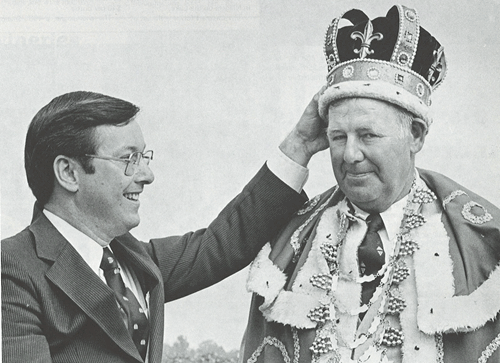“When I got in the business in 1987, when we were selling our first vintage, the markup for domestic wine at the LCBO was 1%. And the markup for imports was 66%. That was the non-tariff barrier that protected the industry. Nobody had a motivation to change because, I mean, today that markup is 73%, 74%. That was why Free Trade was such a disrupter for the industry. But at the same time longer term disruption was also occurring. There were pioneers and innovators who were proving that we could grow viniferas and we didn’t have to be fearful of being able to meet the market demand with what the market was looking for.”
Brian Nash was a colourful and quotable public figure before any rumblings of the Free Trade Agreement hit the streets. An unashamed Canadian, he’d launched his “Fight for Fairness” on becoming Chairman in 1983, blending blistering attacks on the GATT’s two-faced rulings with comments extolling the qualities of Ontario’s grapes and wines. He was a speaker in demand with business audiences and media.
President Ronald Reagan’s closing remarks at the 1985 Shamrock Summit set off alarm bells with Ron Moyer, who phoned Brian Leyden with his concerns. Late that Sunday evening the Board’s information gathering started.
The implications of the simple statement “... we’ll drink your Canadian beer, and you’ll enjoy our fine Californian wines,” proved fearful for Ontario’s wine industry.
The battle was steered by Brian Nash and Jim Rainforth, and ably supported by vice-chairman Art Smith. Brian’s battle cry for “a level playing field” struck a public chord and grabbed media attention coast to coast. Week after week he made public new and “newsy” information, unearthed by relentless probing and research.
During the campaign he made 100 speeches, countless presentations to federal and provincial caucuses, and headed the growers in negotiation after negotiation. He had a powerful ally. Jim Bradley, by now Minister for the Environment in the Liberal government, threw his forces into the fight.
Premier David Peterson already knew the growers through being the guest of honour at the 1985 Celebrity Luncheon, and crowning Grape King Peter Van De Laar. Like Jim Bradley he never wavered.
Premier Peterson and Jim Bradley provided an open door and many casual meetings started close to midnight. The Ontario Grape Growers’ press releases, personal media contacts plus reporting on speeches, carried the Growers’ opposition forcefully, and while challenged many times the Board was never proven wrong. It was a constant source for national news.
The Chairman insisted that growers be informed as fully as possible. Brian was appointed an advisor to Canada’s GATT negotiators in Brussels.
The Board stood firmly against internal criticisms. Brian reacted to threats from senior government officials to settle for a nominal sum or they’d “walk away” with a media conference denouncing blackmail tactics.
The growers were ridiculed for claiming 40 per cent of Ontario’s vineyards would need to be removed after Free Trade. The projection proved sadly correct.
The final negotiated settlement brought $100 million for winery support programs including the Grape Adjustment Program, and $45 million for a Winery Improvement Program. Years later Canada’s head negotiator, Simon Reisman, admitted that giving away the grape and wine industry was an agreed prerequisite to Free Trade talks.
Brian declined to stand as Chairman once the campaign had been won. “I’ve been hitting pretty hard for the last four years ... there’s a lot of people out there likely mad at me ... it’s time to go.”





